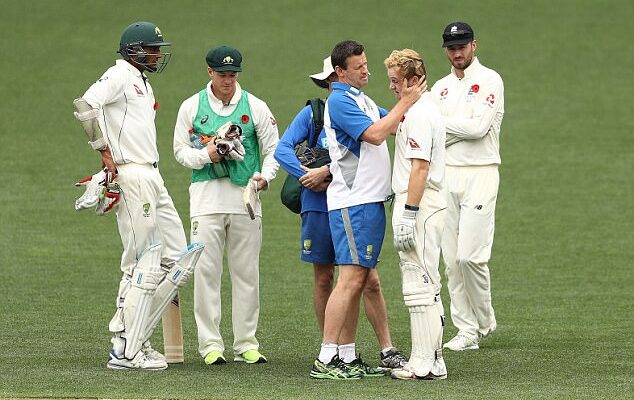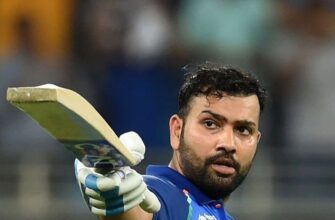In a sport often revered for its deep-rooted traditions and a meticulous adherence to established norms, any deviation from the conventional rulebook tends to elicit a mix of cautious optimism and spirited debate. Cricket, a game where the rhythm of play can be as unpredictable as the weather, has long grappled with the disruptive force of player injuries. For decades, a serious ailment during a multi-day match often meant a team playing with a numerical disadvantage, a scenario that, while dramatic, rarely enhanced the competitive balance. However, a significant shift is now underway, signaling a proactive stride towards player welfare and fair play: the introduction of the injury substitute trial. This landmark initiative recently saw its first implementation in South Africa, with Joshua van Heerden stepping onto the field not as a tactical swap, but as a direct replacement for an injured teammate, Edward Moore.
The Genesis of a Necessary Change
The concept of replacing an injured player during a match isn`t entirely novel in the sporting world. Other major team sports have long integrated substitution rules to maintain competitive integrity and protect athletes. Yet, cricket, with its unique individual roles within a collective effort, has historically approached this with a more conservative hand. The only widely accepted substitution has been for concussion – a rule introduced after growing awareness of head trauma risks. This new trial, however, casts a much wider net, seeking to address a broader spectrum of injuries that can equally cripple a team`s chances. It`s an acknowledgment that while tradition holds its charm, the practicalities of modern professional sport, combined with a heightened focus on athlete health, demand evolution.
Van Heerden`s Historic Entry: A Symptom of Progress
The pivotal moment arrived in a provincial four-day game at Newlands, where Western Province faced the Lions. Edward Moore, an opening batter, sustained a tear to his left adductor muscle while fielding. In previous eras, Moore`s unfortunate injury would have likely left his team a man down, a void in the batting lineup or the field that could profoundly influence the match`s outcome. Enter Joshua van Heerden. His entry as a “like-for-like” replacement marked a tangible step forward. It wasn`t merely a change in personnel; it was a testament to the new trial`s philosophy: to ensure that the spirit of competition isn`t compromised by an unforeseen medical incident. This wasn`t a tactical masterstroke, but a pragmatic response to an unfortunate reality – an acknowledgment that sometimes, even in cricket, fate intervenes, and rules should provide a reasonable recourse.
A Patchwork of Protocols: The Global Experiment
The ICC`s initiative isn`t a monolithic mandate. Instead, it`s a collaborative experiment, with various cricketing nations adopting slightly different protocols to gather comprehensive data. This nuanced approach highlights the careful consideration being given to how such a rule might eventually be standardized globally. Here’s a brief look at the variations:
- South Africa and Australia: Both nations are trialling substitutions for both internal injuries (like Moore`s muscle tear) and external injuries (such as a visible dislocation or broken bone). The verification process is rigorous: internal injuries require ultrasound or MRI scans, reviewed by medical and operations officials, while external injuries can be assessed by the match referee in consultation with these experts. The injured player must be ruled out for the entire match and observe a “stand-down period” – seven days in South Africa, twelve days in Australia – before returning to play.
- India: The Duleep Trophy and Ranji Trophy trials are currently focused solely on external injuries. This more conservative starting point likely aims to simplify the initial implementation and data collection, focusing on easily verifiable physical trauma before tackling the complexities of internal ailments.
These differences are not inconsistencies but rather strategic choices designed to test the boundaries and implications of the rule under varied conditions. Each country`s findings will contribute to a broader understanding, informing the ICC`s eventual decision on a unified international protocol. It`s a pragmatic scientific approach to rule-making, collecting data points from diverse environments before committing to a universal standard. One might even suggest a touch of cautious bureaucracy, ensuring no stone is left unturned – or no hamstring left unchecked – before a global decree.
The Strategic and Ethical Implications
The potential implications of this rule are far-reaching. From a strategic standpoint, coaches and captains might breathe a sigh of relief, knowing that a sudden injury won`t necessarily derail their entire match plan. It provides a safety net, allowing them to focus on the game itself rather than the grim calculation of playing one short. For players, it`s a clear signal of enhanced welfare. Knowing that a serious injury won`t leave their team unfairly disadvantaged can, perhaps, even reduce the pressure to play through pain, fostering a healthier approach to recovery.
The phrase “like-for-like” replacement is crucial. The trial aims to prevent tactical exploitation, ensuring that a specialist bowler isn`t replaced by a specialist batter simply to gain an unfair advantage. The detailed medical verification processes and stand-down periods are designed as safeguards against any attempts to manipulate the rule. The integrity of the game, after all, remains paramount.
Beyond the Boundary: What`s Next?
Currently confined to multi-day domestic cricket, the success of these trials will undoubtedly pave the way for discussions about their implementation in international matches. Imagine a Test series where a key fast bowler is sidelined, but a genuine replacement can step in without fundamentally altering the contest`s balance. This could inject new dynamics into the longer format, potentially reducing the number of one-sided affairs caused by unexpected injuries. The journey from provincial trials to global application is long, but Van Heerden`s steps at Newlands have initiated a fascinating chapter in cricket`s ongoing evolution.
As the cricketing world watches keenly, the data collected from these trials will be meticulously analyzed. The hope is that a well-defined, robust system will emerge, one that respects the game`s rich history while boldly stepping into a future where competitive fairness and player well-being are not just aspirations, but enshrined in the rules of play. It`s a reminder that even the most traditional games must adapt, or risk being left behind in the fast-paced world of modern sports.







